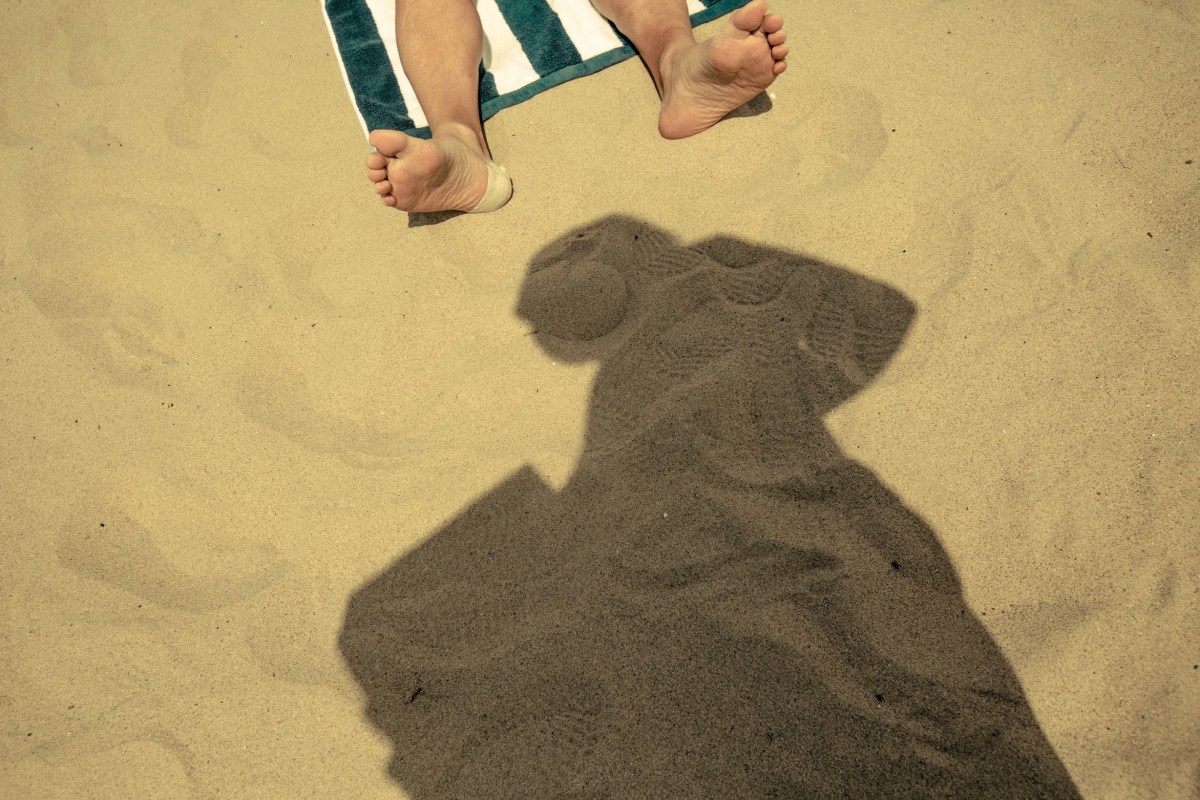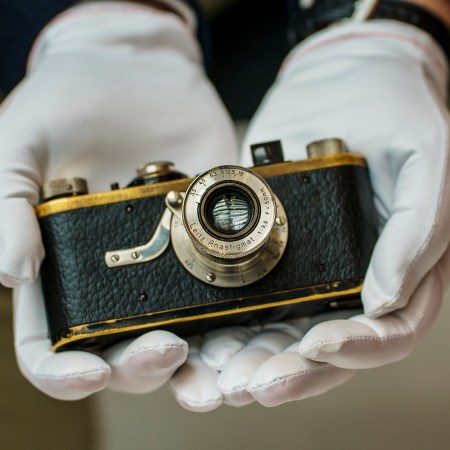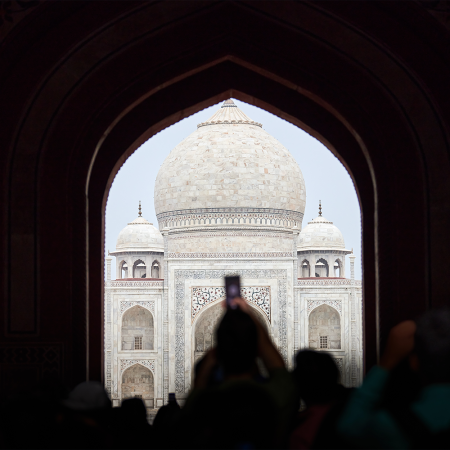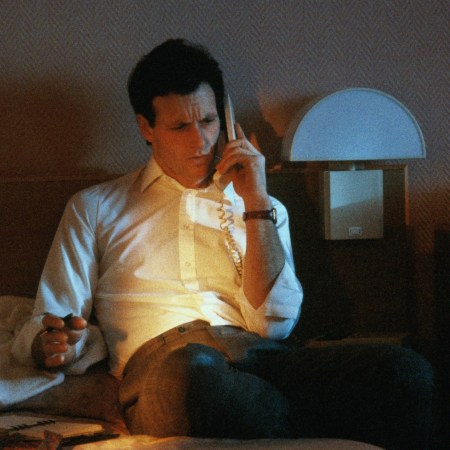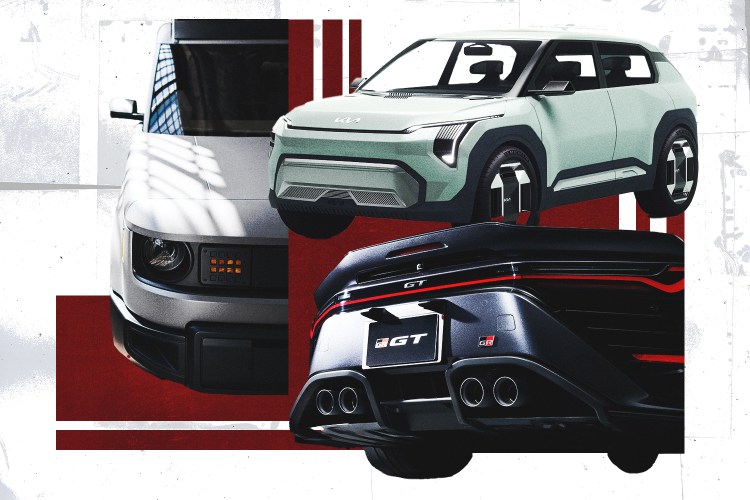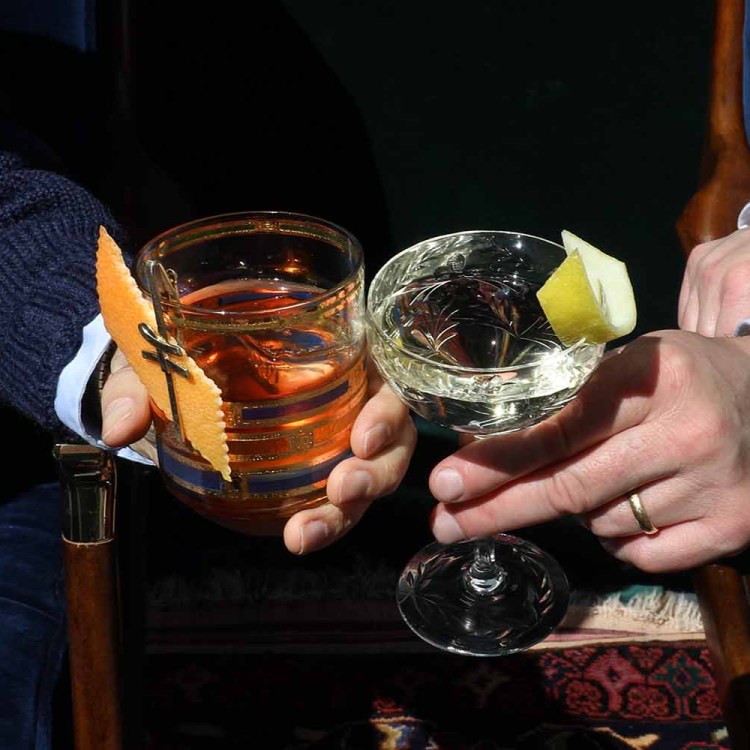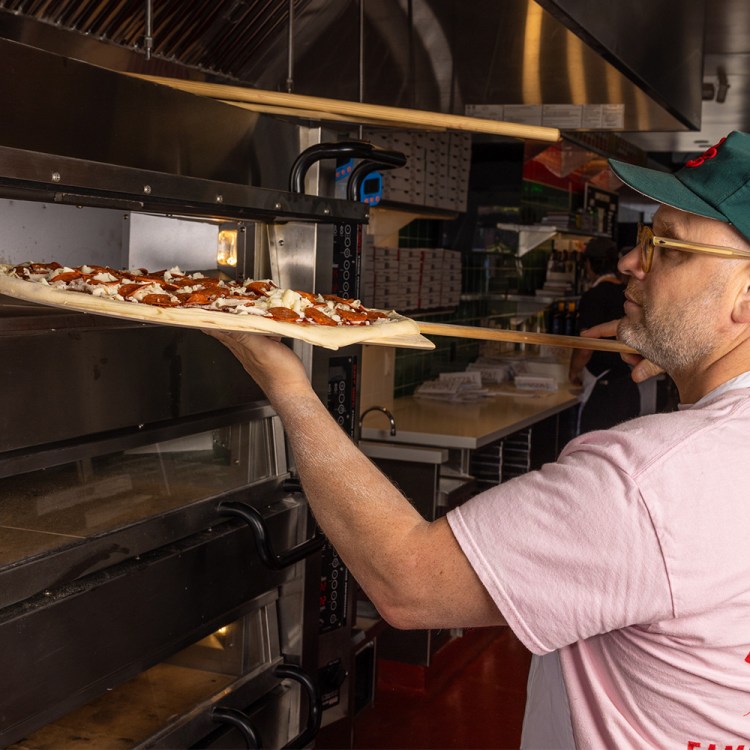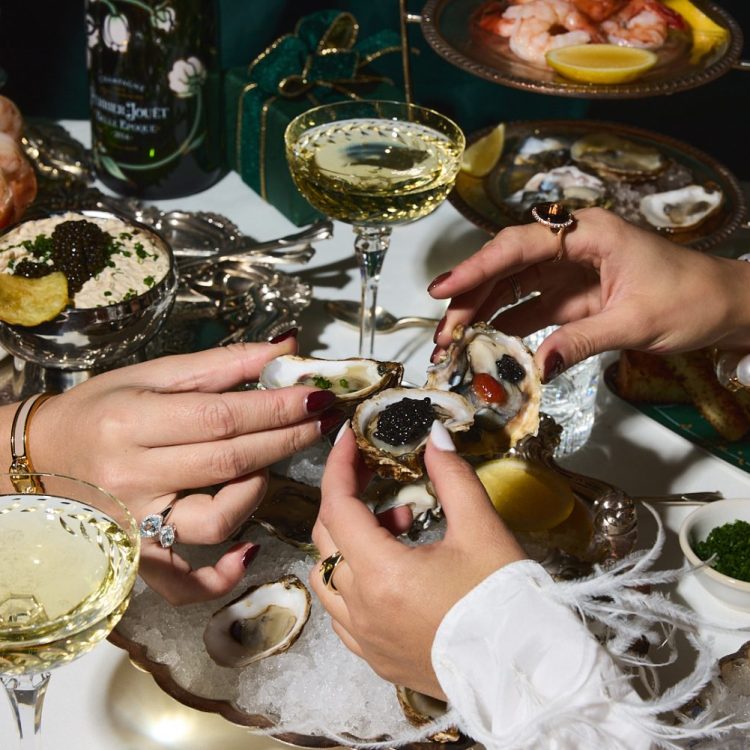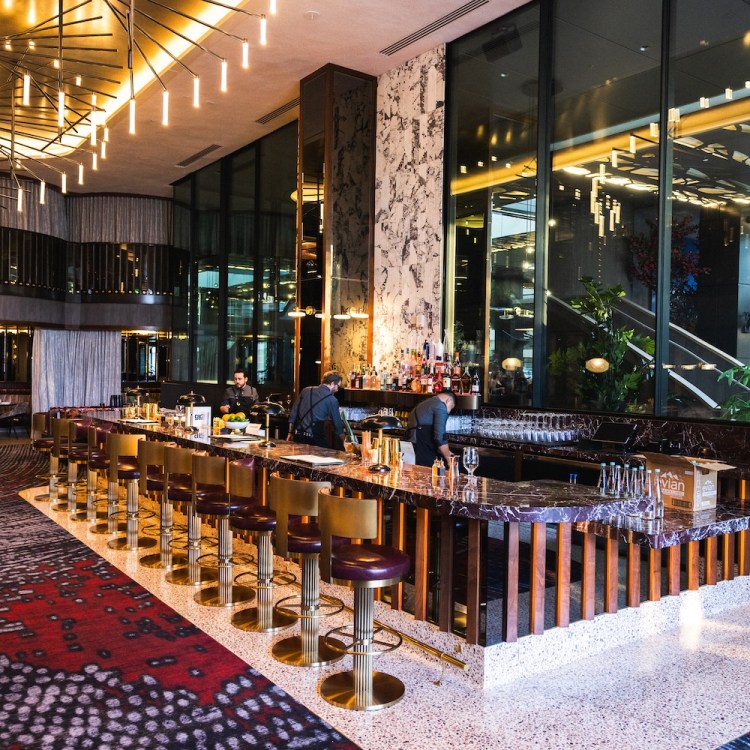Los Angeles, if it must be defined, is a city of incongruous extremes: of sunshine and noir, fame and notoriety, opulence and destitution. Follow Sixth Street past the mega-mansions of Beverly Hills and you’ll soon find yourself in Skid Row’s tent city. There are earthquakes in paradise. There’s a beach only 10 miles away, but it’ll take you half a day to get there.
For these reasons (and many more), L.A.’s the perfect playground for street photographers, whose artform often thrives on the ironies and extremes of the human condition. And yet, in this regard, L.A. provides one more curveball. “The photographer,” wrote Susan Sontag, “is an armed version of the solitary walker, stalking, cruising the urban inferno.”
But how does one cruise the urban inferno in a city where, notoriously, nobody walks? Where does one go to find subjects to shoot?
We recently sat down with Ben Pier, Hana Mendel, and Jake Michaels, three L.A.-based superstars in the world of street photography (and photography in general) to discover what advice (if any) they can offer aspiring shutterbugs, from where to get started in L.A., and what to do when the proverbial shit hits the fan.
Collectively, the three have shot campaigns for Warby Parker, Nike, Sony, Nokia, and more, along with editorials for The New York Times, Playboy, Thrasher, The Photographic Journal and on, and on. But as you’ll soon find out, for them, it all starts on the street.
If I were an aspiring street photographer living in Los Angeles, where would you recommend I begin shooting, geographically? What is your favorite place to shoot street photos in L.A.?
Ben Pier: Hollywood Boulevard, Venice and Downtown.
Hana Mendel: I’d say, firstly, follow sound. The louder the environment, the quieter your motive. I recommend beaches, particularly the tourist traps. Between the blaring pop music and the sound of the ocean, it’s the perfect playground.
Jake Michaels: I always tell new photographers to begin by photographing what they know. There are no keys to shooting street photography — it’s not like, “Oh, go to this place and you’ll make amazing work.” Photograph what you’re interested in. So, for me, I always used to choose to shoot Downtown, because that’s where large groups of people gather. But if you live in Santa Monica, shoot there. It doesn’t matter where you are. What matters is that you’re shooting as much as possible.
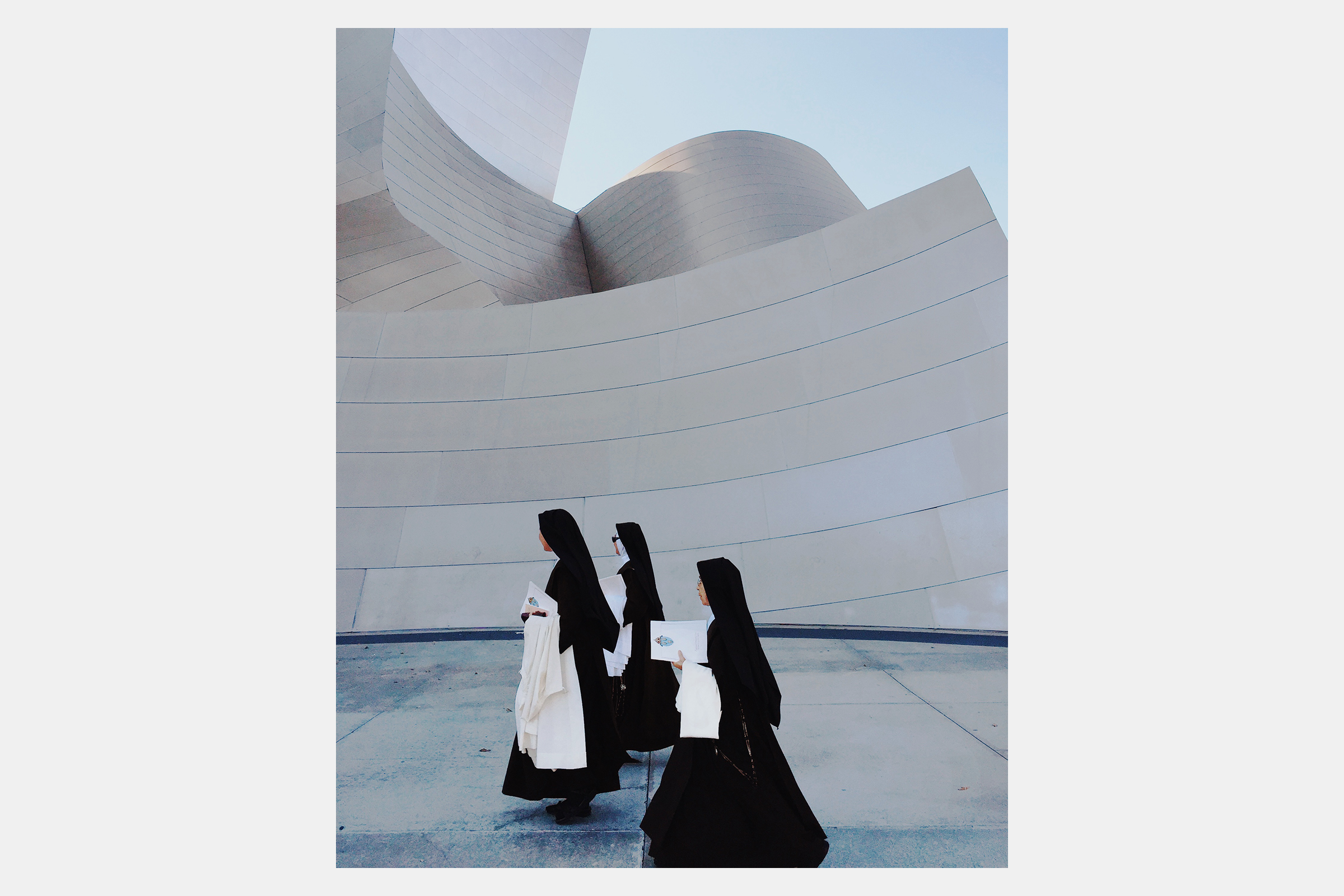
Do you have a routine when you shoot? A favorite time of day to grab shots?
BP: I like high sun because I love natural light and because I’m not a big golden-hour guy. And I think my routine is … I don’t know — I usually choose a day that I’m going to shoot and then I go out and shoot. I let myself be led by instinct. Literally, “What’s that color over there? Oh, the wind is blowing this way.” The plan is to not have a plan and to be completely open to letting the environment speak to you as much as possible. That’s part of the fun.
HM: I usually wrap the camera strap around my right hand three times. I always shoot from the hip and shoot to the rhythm of my walking pace. I don’t think that last part is necessary, it just seems more natural that way — less noticeable, maybe. I typically shoot between 3 p.m. and 7 p.m., or whenever the sun seems to be doing its thing.
JM: I challenge myself to shoot between 10 a.m. and 2 p.m., which is not a time when most people tend to shoot. But I try to use that time because I find it challenging in that I’ll be more surprised when I get something good than I would, say, if I were shooting at the magic hour or early in the morning. In terms of routine, I used to spend hours and hours walking around taking photographs, sometimes walking five or six miles and spending half the day cruising around the city. Now, it’s less of a routine. I take photos based around what I’m doing with my day — running errands, or doing things around my studio.
What do you look for in a street photograph?
BP: I don’t usually have a preconceived notion of what I’m looking for. Like with shooting L.A., I’m not trying to take photos that look particularly Los Angeleno. I just take photographs of moments I find interesting and, naturally, because I’m in this place with all this ephemera, it’s always going to be Los Angeles. This place is so big, so vast and sprawling, there are photographs everywhere if you know how to look and knowing how to look just takes practice.
HM: Emotion, lighting, movement.
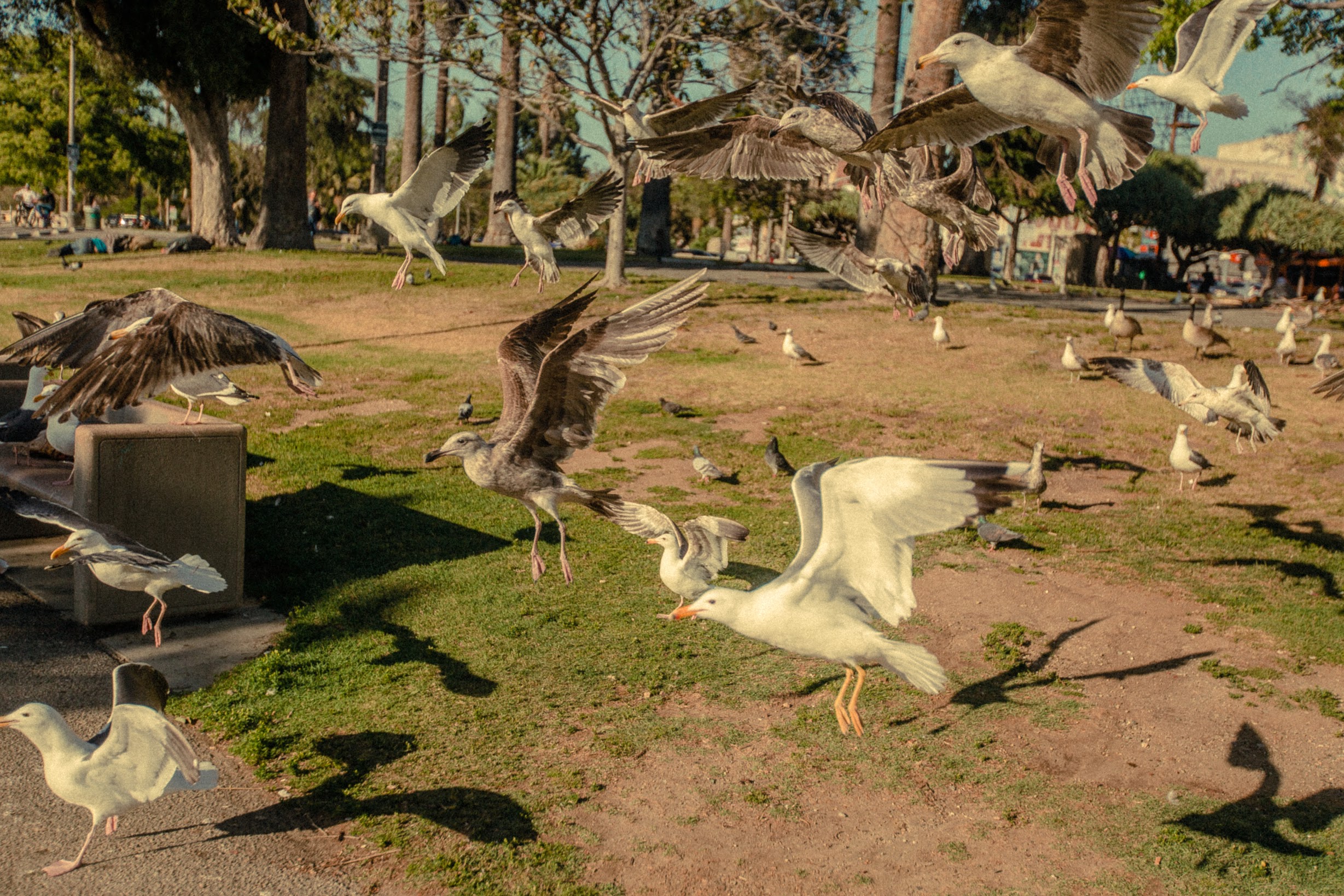
JM: I look for interesting coincidences and things that strike my eye. At this point in my career, where I’ve developed and honed my own style, it’s about 75% looking and 25% shooting. It used to be the opposite. I shot everything all the time and would carry my phone directly in my hand, always. I’d go into swap meets and alleys and just follow the maze that is Los Angeles until I hit on something interesting. Now, I’m viewing scenes as they go past and going about my regular day until I come across something that grabs me.
Do you often engage your subjects, or shoot them voyeuristically? Do you find that engaging them or shooting them voyeuristically lends itself to better work, one way or the other?
BP: I prefer to engage if I can. That’s the thrill of it for me — going up to strangers and having them open up. Other times, though, I’ve learned it’s better if you don’t ask and you just get the tableau of the scene as it is. But I love portraits of people. You have to read their energy, understand how to get them to open up without scaring them off or freaking them out. It’s taken me a long time to learn how to read people, but now I can talk to anybody and that translates into other areas of my life, both professionally and personally.
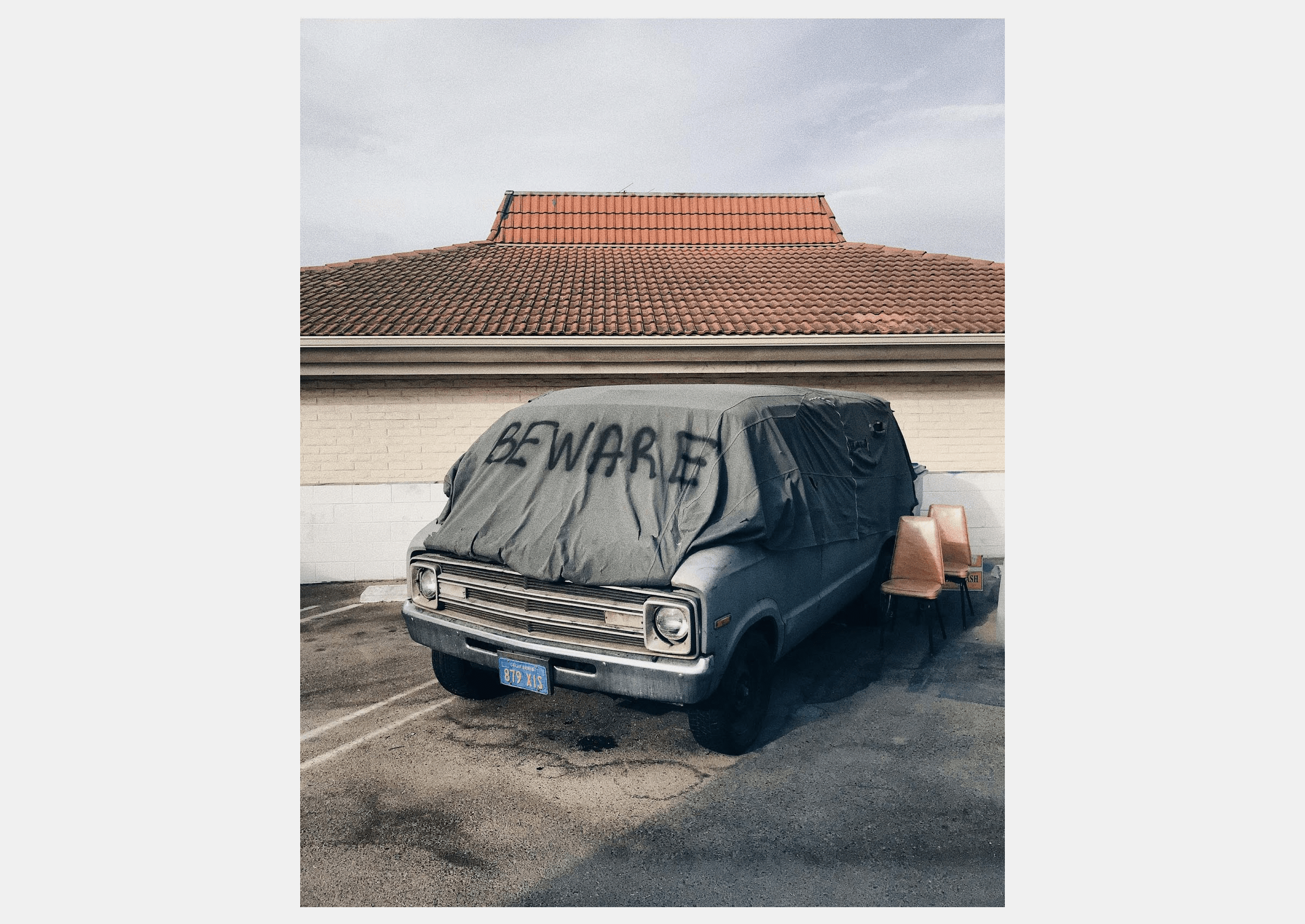
HM: Always voyeuristically. I’m uncomfortable with the idea of forcing them to interact with me. I’d rather remain part of the moving environment around them. I’m documenting a moment that exists with or without me, and it should feel as such.
JM: It’s a combination of the two. There are times when it’s appropriate to engage a subject and times when the more voyeuristic shots are appropriate. One of the things that helped me advance photographically is just talking to random people, sometimes for as long as 30 minutes or more. Sometimes you eventually get the photograph you were envisioning in your head and sometimes you don’t. Either way, I’ve taken the same approach into my photojournalism: it’s about building rapport and taking things from there, unless it’s a moment in time that’s only going to happen in that moment, then I just take the photo.
What gear would you recommend an aspiring street photographer start with? What gear do you use when you hit the streets? Do you have a favorite camera, lens, type of film, etc.?
BP: I sort of hate the gear question, because it doesn’t really matter. Shoot with whatever camera you can get your hands on, then keep shooting and shooting until you start to capture work that you find interesting.
HM: Street photography is mostly luck, so unless you’ve got money to do so, I’d avoid limiting yourself to film. Realistically, 9/10 times, you’re going to miss the shot, and digital allows you a bit more control in that department. In a scenario lacking all control, like street photography, that is one detail you should consider. I shoot on a Canon 5D Mark III and a wide-angle lens, anything under 35mm.
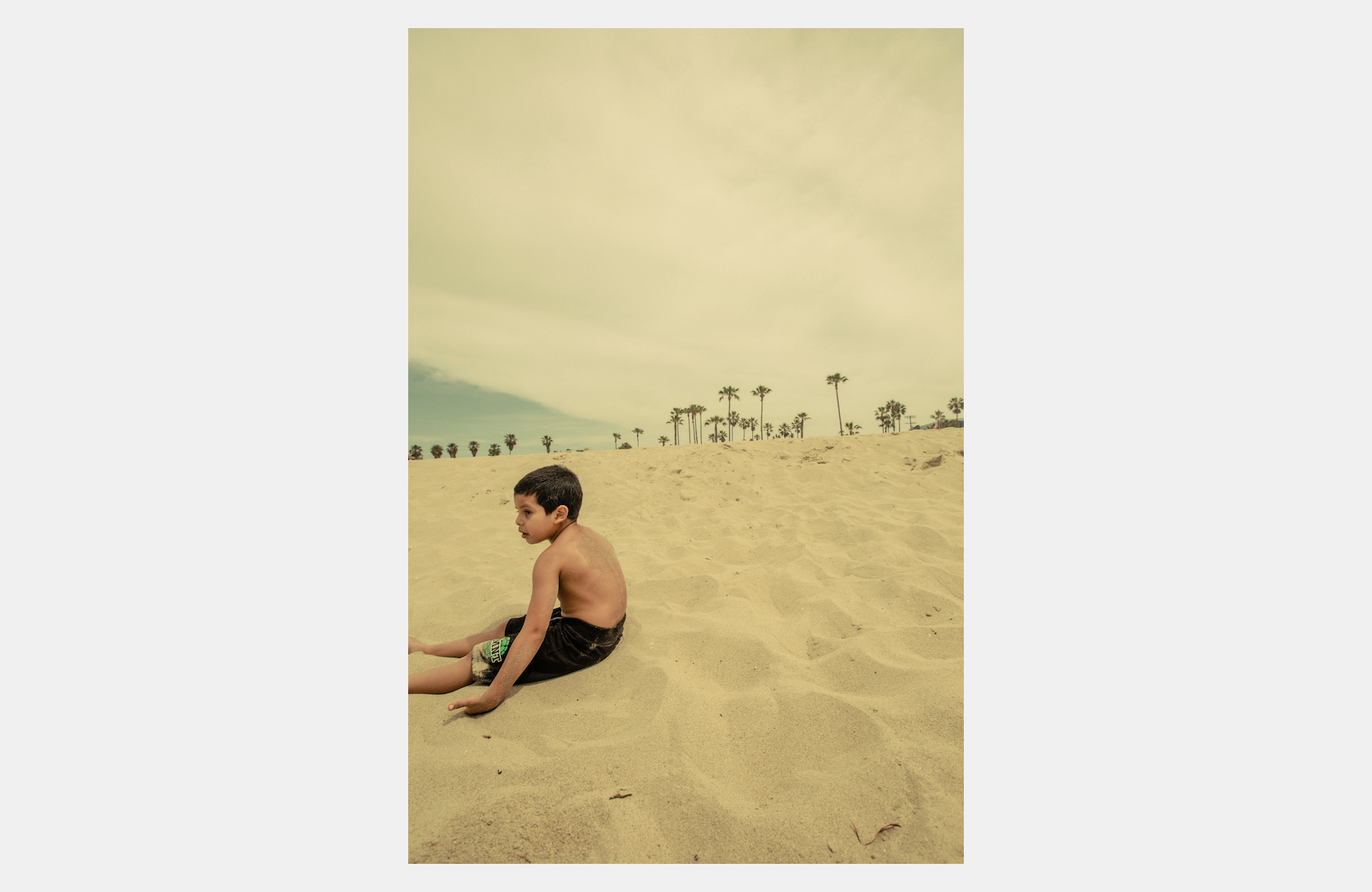
JM: I would choose a smartphone, because if the photograph is good people don’t ask what it’s taken on. Or they might ask, then they’re usually shocked to hear it was taken with a camera almost everyone carries in their pocket. I mean, if you think about, information can be translated through any device — the front page of the New York Times will feature a photo taken by a security camera if the shot is interesting. I’d chose to use a phone because it’s probably the most easily accessible camera around the world, and for me, it’s about using a tool that’s accessible to most.
Any strange or horrible experiences you’ve had shooting on the streets of L.A.? Tell us a story.
BP: The one that comes to mind is this encounter with a guy in Venice. He was on the boardwalk there, standing under this sign, holding, like, 20 incense sticks — and he looked insane, which I guess was appealing to me in that moment. I walked by and took his photo and he heard the shutter click. Then he looked up and said, “You do that again, I’ll fuck up your face.” Or something like that. Anyway, I could tell he totally 100% meant it and I just had to walk away before he fucked up my face. Turned out to be a great shot.
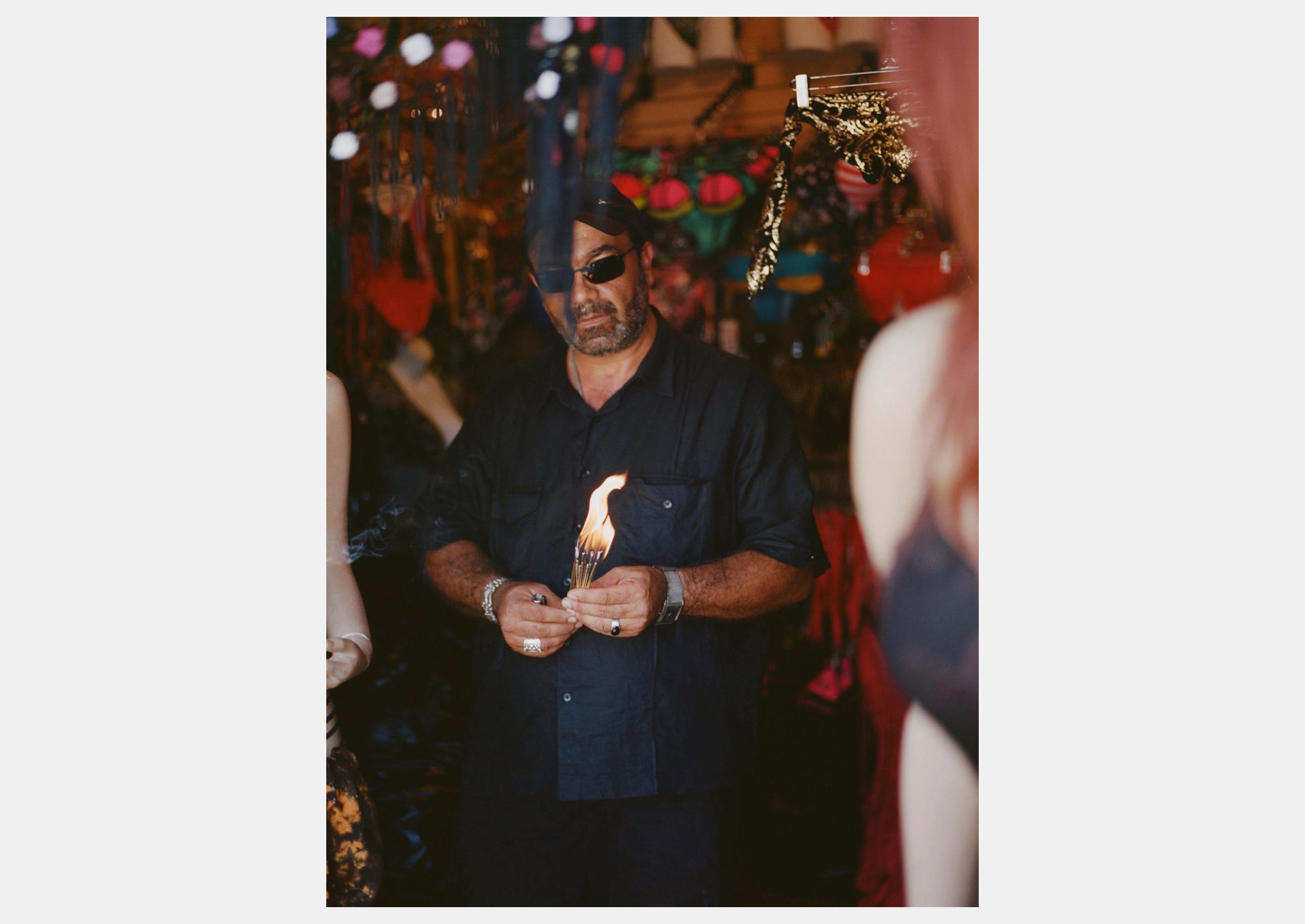
HM: I lack severely in this department and I’m not too upset about that. When I’m shooting, I’m invisible. If someone notices that I took an image, I play stupid. I fumble a bit with my camera, as if I’m taking test shots and trying to understand what I’m doing. My goal is to not intimidate. It’s a bit of an act, but it’s necessary to get the image. People assume that I don’t know what I’m doing to begin with — I’m young, female, and when I’m shooting street, I’m holding my camera in a way unfamiliar to most. So, I play the act and get the images.
JM: At the beginning of my career, whenever there were fire trucks or police cars with their sirens on, I’d sort of follow them in order to chase potentially good shots, and one time they led me to this structure fire near MacArthur Park. I wanted to get a closer look. But I ended up way too close. I wasn’t in the way of the fire department or anything, but it sort of frightened me. Best part of that experience, though, was talking to this woman who lived in the apartment next to the fire and getting her point-of-view on the moment. She had this newborn cat in her arms and she was just really interesting. That’s where photography sometimes leads — to these interviews with people that will never be written down and never published. There’s so many things I can personally enjoy that isn’t part of the public record. Anyone could have a good story. That’s the rewarding thing about street photography, it leads to interesting interactions with all sorts of people. At least, that’s one of the reasons I like doing it.
If I wanted to begin a career in photography, or to improve the art of my street photography, how would you recommend I begin? Any tips or tricks? Words of wisdom?
BP: Don’t overthink what it’s going to be. If you’re starting out, I think you can take an interesting photograph walking your dog or going to the post office. Just have your camera on you. Like, your photos at the beginning probably aren’t going to be very good, but that doesn’t matter. It’s a numbers game. You’ll get better. Just get out there and do it.
HM: Shoot that which you love most — it will show through your images. It always does. Don’t focus on the reality of it all, that’s not important. Photography isn’t reality, it’s perception. Learn to accept and embrace that. This medium is malleable, you can define what this means for you. Explore.
JM: Practice. That’s the number-one thing. Honestly, it’s just shooting everyday. Take a picture, if it’s one or 100 — take a picture everyday, because it takes years to figure out your point of view. And photograph what you find interesting. Even some days when it’s challenging, keep going because there’s a lot of failure that goes into success. Just push through.

Finally, why do you shoot street photography?
BP: I think street photography is the most pure form of photography — you’re not casting, you’re not setting anything up, there’s no product or celebrity that you have to shoot. You’re essentially making an interesting scene out of nothing, out of thin air, out of your environment. That’s why I like it, at least. You get to communicate what you find interesting or beautiful, and it gives you a heightened awareness of your surroundings, which is fun.
HM: Because I want to remember the world as it is, or was. Not in an idealized way, but to reflect. Things are changing, but many dynamics stay the same. Embarrassed teen with parents, bickering old couple, tearful reunions — these interactions make us human, and, sometimes, we all need to be reminded of our humanity.
JM: The simple answer is, “Why not?” And the more diverse answer is … well, it’s something about being on an equal playing field as everyone else. I mean, street photography, especially now, is a type of photography that a lot of people are doing. So for me, I think I like street photography because anyone can do it. It doesn’t require anything but patience, which I think is an important thing to learn.
This article was featured in the InsideHook LA newsletter. Sign up now for more from the Southland.
